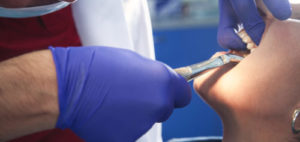
When it comes to dental procedures, particularly tooth extractions, one complication that can arise and cause significant discomfort is a condition known as dry socket (alveolar osteitis). While not overly common, affecting a small percentage of patients, its impact on those who experience it can be notably painful and extend the recovery period. This comprehensive guide aims to shed light on what dry socket is, its causes, symptoms, and the available treatment options, as well as strategies for prevention.
What is Dry Socket?
Dry socket occurs after the extraction of a tooth when the blood clot that forms in the socket (the hole in the bone where the tooth has been removed) either fails to develop, dislodges, or dissolves before the wound has had a chance to heal. This clot is crucial as it serves as a protective layer over the underlying bone and nerves, aids in the formation of new tissue, and is a key component in the healing process. Without it, the bone and nerve endings are exposed to air, food, fluid, and bacteria, leading to inflammation and significant pain that can radiate to the ear, eye, temple, or neck on the same side of the face as the extraction.
Causes of Dry Socket
The exact cause of dry socket remains partially understood, but several factors increase the risk:
- Tobacco Use: Smoking or tobacco use can contaminate the wound site and affect the healing process.
- Poor Oral Hygiene: Inadequate cleaning of the mouth can lead to bacterial contamination of the socket.
- Trauma: Trauma during tooth extraction can increase the risk of dry socket.
- History of Dry Socket: Individuals who have experienced dry socket previously are more likely to develop it again.
- Use of Birth Control Pills: High levels of estrogen from birth control pills can disrupt the healing process.
- Improper Aftercare: Vigorous rinsing or spitting, drinking through a straw, or physically disturbing the site can dislodge the blood clot.
Symptoms of Dry Socket
The primary symptom of dry socket is pain, which typically begins one to three days after the tooth is extracted. Other symptoms include:
- Partial or total loss of the blood clot at the tooth extraction site, which may appear as an empty-looking (dry) socket.
- Visible bone in the socket.
- Pain that radiates from the socket to your ear, eye, temple, or neck on the same side of your face as the extraction.
- Bad breath or a foul odor coming from your mouth.
- Unpleasant taste in your mouth.
Treatment for Dry Socket
Treatment focuses on relieving pain and promoting healing. This includes:
- Cleaning the Socket: The dentist or oral surgeon may flush out the socket to remove any debris that could be causing infection.
- Medicated Dressings: To protect the area and reduce pain, medicated dressings may be applied to the socket.
- Pain Management: Over-the-counter pain relievers or prescription medications can help manage the discomfort.
- Self-care: At home, patients are advised to follow a regimen of gentle rinsing with salt water and to continue with careful oral hygiene.
Preventing Dry Socket
Prevention is key and starts with following the oral surgeon’s or dentist’s instructions carefully after tooth extraction. Tips include:
- Avoid smoking or tobacco use before and after the extraction.
- Follow good oral hygiene practices, but avoid brushing the extraction site directly for the first day or so.
- Avoid using a straw, spitting vigorously, or any other action that could dislodge the blood clot.
- Eat soft foods and gradually reintroduce solid foods as the site heals.
Conclusion
While dry socket is a relatively rare complication, it’s important for those undergoing tooth extractions to be aware of the condition. Understanding the causes, symptoms, and treatment options can prepare patients for a smoother recovery, minimizing discomfort and promoting healing. Always adhere to your dental professional’s guidance before and after an extraction to reduce the risk of developing dry socket and ensure a speedy recovery.
Call us now at 713-234-5003 to schedule your appointment!
Note: This blog is intended for informational purposes only

